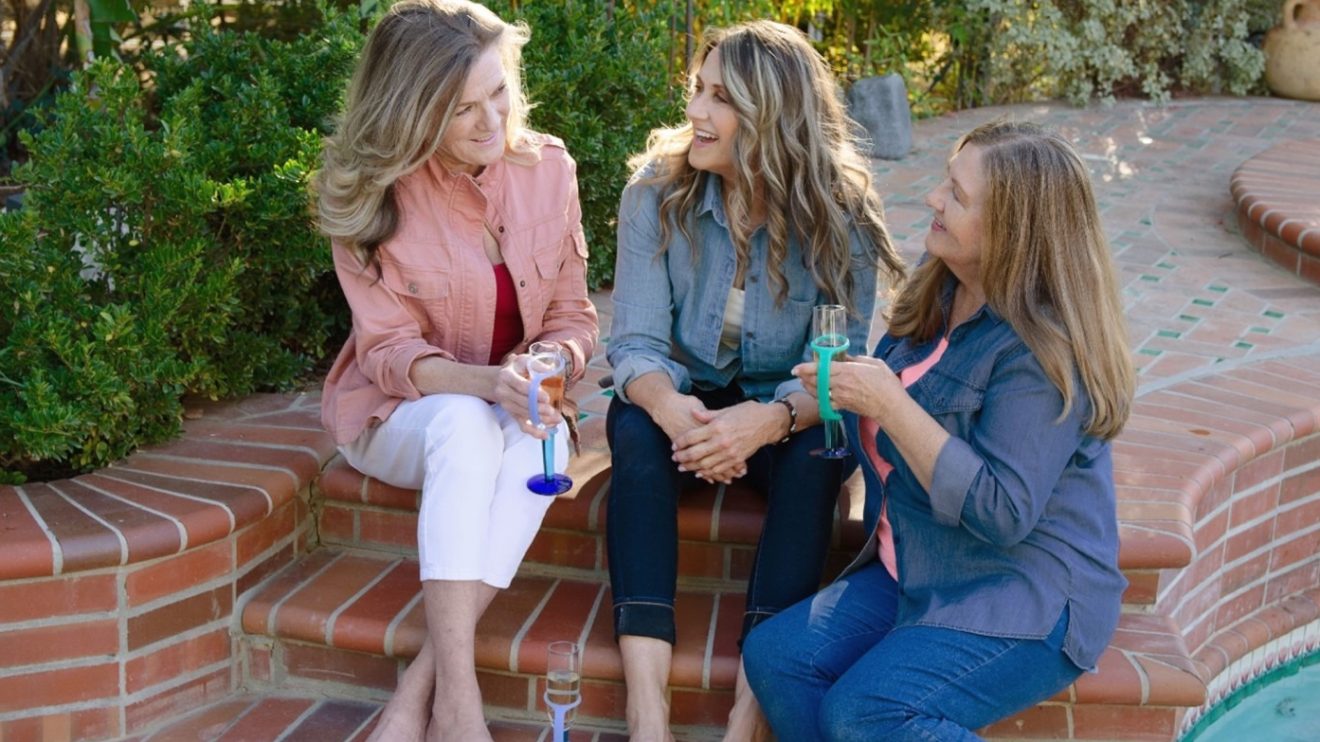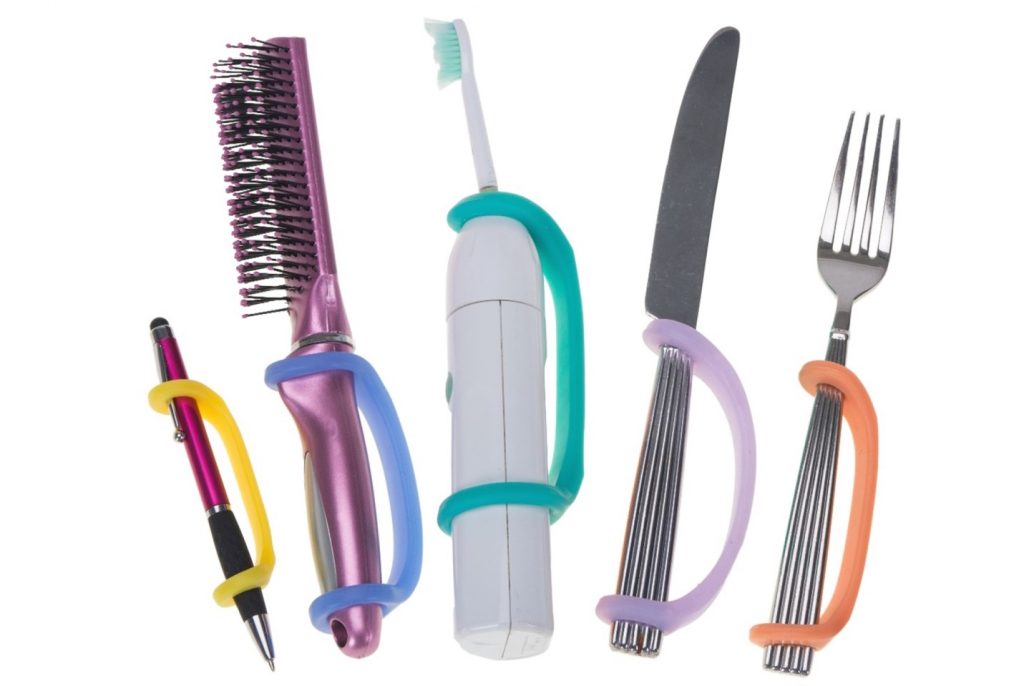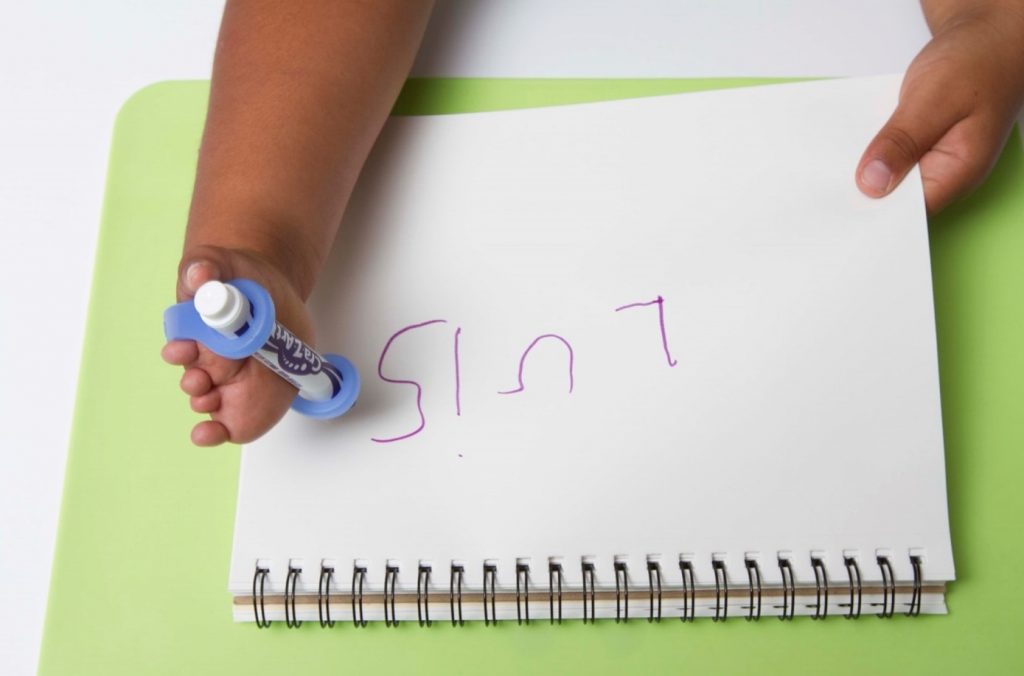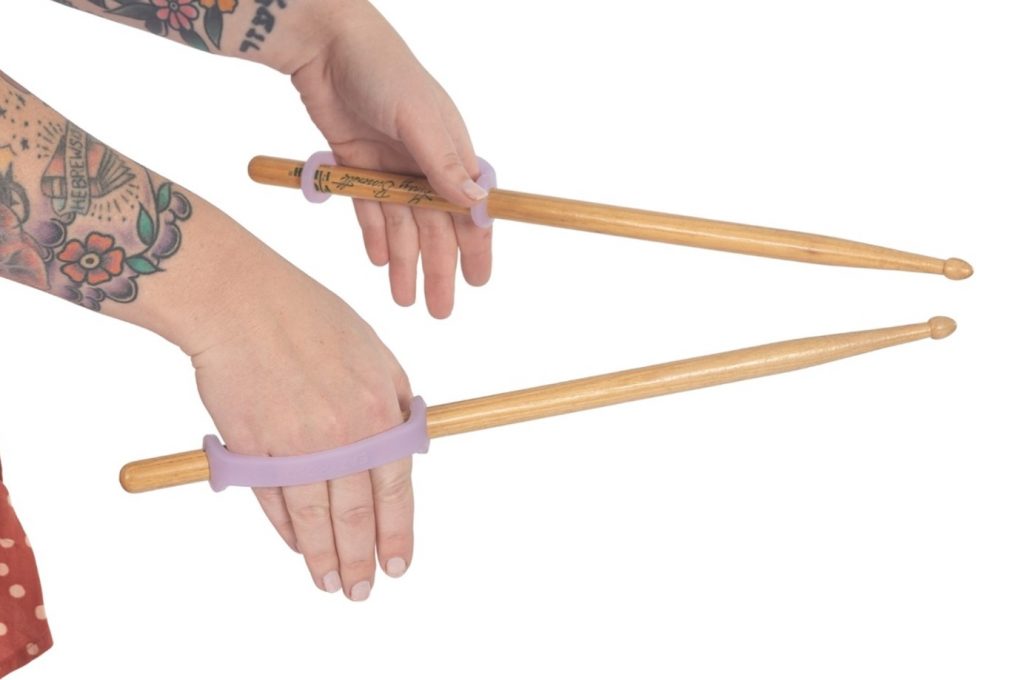Many of us take for granted the ability to grasp objects with ease. However, for some people, even everyday objects like forks present a challenge. We spoke with Kerry Mellin about how she, alongside her sisters Merrily and Wendy, set out to address this challenge with their product, EazyHold. EazyHold is a silicone cuff that enables people to hold onto objects with ease.
Tell me what inspired you to start your company.
One day, I was cleaning my barn, preparing for an event. While sweeping, I had problems holding onto the broom due to my arthritis so I duct-taped my hand to the broom. The experience caused me to wonder if others might be having similar problems using everyday tools.
Tell me about your experience volunteering at North Ridge Hospital. What were some lessons you learned?
When I was younger, I volunteered in the spinal cord ward at North Ridge Hospital. I assisted the occupational therapists (OT) in teaching patients to relearn everyday tasks, such as eating, drinking and writing. I observed the OTs making homemade cuffs for the patients from Popsicle sticks, tape and other materials. Commercial cuffs spread bacteria and germs. I wondered why there was not a universal cuff.
My research began thirty-five years later. I wanted to see whether cuffs had been updated. Cuffs were still being made of elastics and Velcro. My sisters and I started to explore the idea of using silicone as the material for the cuffs.
What were some of the challenges you faced when setting up your business? How did you overcome the doubters?
One of our biggest challenges was that we were not technologically savvy. Together, we had to learn how a business plan is formed from inventory controls, e-commerce and distribution.
Another challenge was convincing the doubters that our product was viable. For example, my dentist was not supportive. Every six months, I would go to him for my appointment, and he would ask me how my product was coming along. Despite making significant strides between appointments, my dentist would always tell me not to quit my day job or give me some reason why our business would fail. He was genuinely surprised towards the end. We had made such strides toward product success without a medical degree or experience. After that, he never questioned my abilities.
How did you get doctors, educators and parents to adopt your product?
We started by getting a consensus on our product and determining who would find it valuable. We showed samples of our products at a local flea market. While there, we displayed the prototype cuffs on all kinds of objects: forks, toothbrushes and writing instruments. People from all walks of life, nurses, teachers and parents stopped by and told us how they knew someone who could benefit from this product. Many people left their contact information and offered to try the prototypes of the EazyHold product. A local newspaper wrote a story on our product.
That day we did not run into doctors and OTs. My sisters and I decided to hang out in the hallways of hospitals. We met with doctors and OTs to educate them on the value of our product. The doctors and OTs saw the value of the EazyHold cuffs for their patients.
What advice would you give other entrepreneurs considering a product or service within the disabled marketplace?
My advice to other entrepreneurs is to look at aspects of life that can be improved upon. Using your own experience to back up a product or service is invaluable.
Invention and innovation do not always mean coming up with a new idea. Innovation can be taking an old idea and putting a new spin on it.
The disability marketplace needs more products, especially ones that can make it into the mainstream market.
I recently started the Women’s Mutual Mentorship Group for disability products. We meet once a month. The group discusses how we can support each other’s products. By banding together to share our experience with other inventors/entrepreneurs, we can create a wide range of uses for these products. This makes it easier to make it into the mainstream marketplace.
At what point did you feel that you achieved brand success? What were the milestones, and how can other entrepreneurs recognize their own success?
EazyHold operated for three years without making money. One of the most significant milestones was when my sisters and I realized we could quit our other jobs and devote our time to EazyHold.
Merrily left her job as a director of childhood education to focus on the business. Within six months, I realized I could take that leap as well. My mentors strongly advised against this, suggesting I needed to be one hundred percent certain the business could afford two salaries. I was determined to work hard on our business, and with time I would be making a profit.
The next milestone was when the LA Unified School district ordered $22,000 worth of product. This district is the second-largest school district in the United States. The sale demonstrated to us the viability of our product. Also, in 2019 Amazon voted us one of “Top 6 Women-Owned Small Business of the Year.”
How has the disability community reacted to your products?
It was highly positive from the beginning. When we still only had prototypes, we signed up for an expo called the Abilities Expo. Much like our experience at the flea market, we received lots of positive inquiries. The Red Cross said that they saw a benefit of using these cuffs in times of disasters. It can give people independence to use everyday items when hospitals or other supportive services are not readily available.
Simple everyday products are important. At the expo, there were mechanically driven wheelchairs, computers and other emerging technologies. However, there were few simple, low-tech tools. I encourage founders and entrepreneurs to explore this avenue for new ventures.
I also consider the expos an excellent way for other entrepreneurs to get their disability products greater visibility.
How does marketing differ in the inclusive marketplace?
Marketing for us is different from your “standard hamburger”. You need to be aware and cognizant of marketing to this group of people. There is certain vocabulary that you want to use and not use. Going to the expos was an essential aspect of my education about the marketplace.
Furthermore, the expos can expose founders to new audiences. A drummer came by who had a neck and spinal cord injury. He thought he would never hold a drumstick again.
Going to flea markets and building the community was key to our success. These relationships were pivotal to building brand recognition and key relationships. Develop relationships with interested parties, keep in contact, give them samples to ensure your growth and success.
Social media is crucial in building your brand. From that small flea market, I met a mother connected to a network of other parents who had children with cerebral palsy. The other parents all tried out the EazyHold product with their children. Within two weeks, EazyHold had two thousand new followers on social media. These new followers were mainly parents who were eager to explore any new tools that could help make their child’s life easier. Social media drives the community. They love to share the good news about any new product or service that can improve their daily lives.
A lot of our social media content is community driven. We constantly get in videos or pictures of people using our products. The community wants us to recognize the challenges that they go through and milestones they can achieve.
Do you ever think about how you are expanding the definition of “entrepreneur”?
When I looked up the definition of entrepreneur, it said: “It is a person who organizes any enterprise with considerable initiative and risk.” When you say managing an enterprise with considerable initiative and risk, that is the description of every homemaker I have met. There is risk in raising children from financing to keeping food to the house. By definition, a homemaker is a perfect entrepreneur. I want women to know that these skills can be transferable. “Perhaps women have always been entrepreneurs, and it is not much different than stepping into a field that you are choosing the direction you want to go.”
What advice do you have for other female entrepreneurs who faced the doubters?
Listen to your gut. If you think there is a need, then stick with it. There are many doubters in life. You do not know if they are telling you cannot do it because they are jealous. They may also want to take the idea and run with it themselves. You can never truly tell what drives people’s motives, so trust your instincts.
Tell me about your product’s journey – what is the future you envision?
Our main goal is to get EazyHold and other inclusive products into the mainstream marketplace. We want to have our product appeal to a broader audience.
Recently EazyHold entered a contest, “Making it with Lowes.” This contest asked diverse businesses to send in their products. We made it into the top 8 group with an applicant group of 1,300 products. As a result, our product will be going onto shelves nationwide in Lowe’s retailers within the next few months. This is an enormous victory for bringing inclusive products into the mainstream marketplace.
Are you interested in joining the Women’s Mutual Mentorship Group? Reach out to Kerry Mellin at media@eazyhold.com for more information.










Thank you for sharing our story. We are grateful for resources like this which provides valuable information and inspiration for women working in or out of the home… Or both!